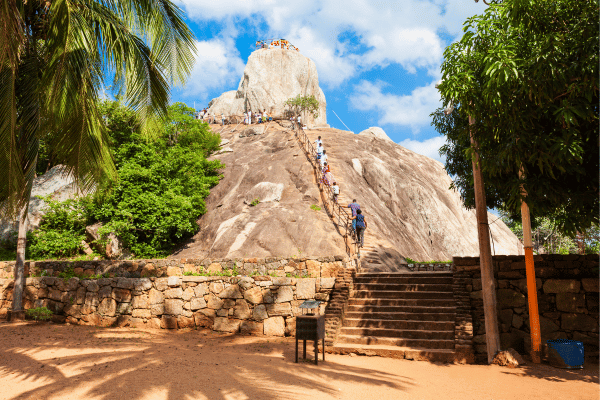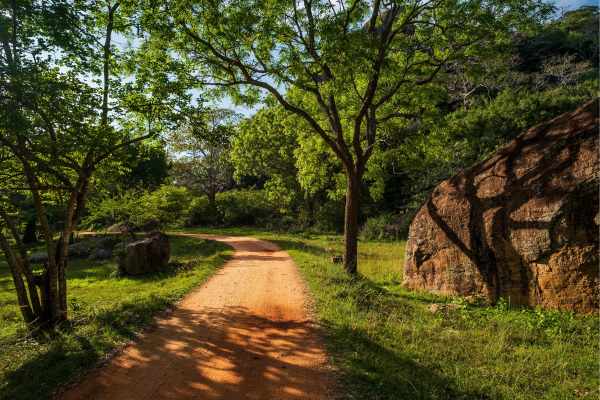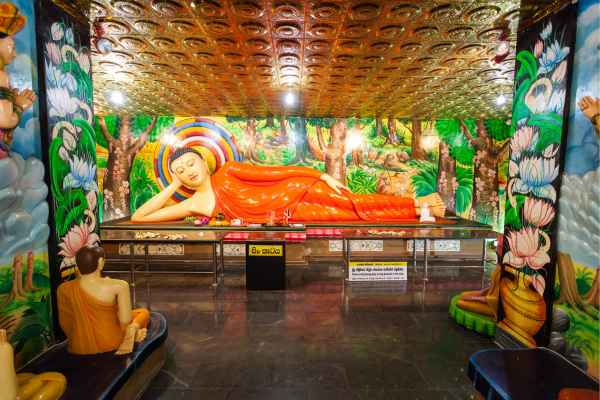Mihintalaya: A Spiritual Oasis of Ancient Sri Lanka – Nadeeka – eLanka
Nestled amidst the lush greenery of Sri Lanka, Mihintalaya, also known as Mihintale, holds a significant place in the island nation’s history and spirituality. This sacred site stands as a testament to the profound impact of Buddhism on the island, marking the momentous occasion of the introduction of Buddhism to Sri Lanka in the 3rd century BCE. With its serene ambiance, historical significance, and spiritual allure, Mihintalaya remains a popular pilgrimage site and a cherished destination for travelers seeking to connect with the island’s ancient past.

- The Origins and Significance of Mihintalaya
Mihintalaya is located approximately 12 kilometers east of Anuradhapura, the ancient capital of Sri Lanka. Its importance in Sri Lanka’s history stems from the pivotal encounter between King Devanampiya Tissa and Arahat Mahinda, the son of Emperor Ashoka of India. In 247 BCE, Arahat Mahinda arrived in Sri Lanka on a full moon day, during the reign of King Tissa, to propagate the teachings of Buddhism.
The meeting between Arahat Mahinda and King Tissa is believed to have taken place on the rock known as the “Mihintale Rock,” leading to the site being named “Mihintalaya” or “the mountain of Mahinda.” This encounter marked the formal introduction of Buddhism to the island, significantly impacting its culture, society, and religious practices.

- The Architecture and Layout of Mihintalaya
Mihintalaya is a sprawling complex comprising various structures that reflect the architectural brilliance of ancient Sri Lanka. A grand staircase with 1,840 steps leads pilgrims and visitors up the rocky hill to reach the main stupa and the monastic complexes on the summit. Along the climb, numerous shrines, inscriptions, and historical sites can be found, each carrying its own significance.
The Ambasthala Dagoba is one of the prominent structures, believed to have enshrined the relics of Arahat Mahinda. At the summit, the magnificent Maha Stupa stands tall, offering a breathtaking panoramic view of the surrounding countryside. The Kantaka Chetiya, Kaludiya Pokuna (Black Water Pond), and several other stupas and caves add to the spiritual ambiance of the site.
- Spiritual and Cultural Significance
Mihintalaya holds immense spiritual and cultural significance for Buddhists in Sri Lanka and beyond. Pilgrims flock to this sacred site throughout the year, especially during the Poson Poya festival, which commemorates the introduction of Buddhism. During this period, Mihintalaya becomes a vibrant center of religious observance and celebration, drawing thousands of devotees who engage in various religious activities and almsgiving.
Apart from its religious importance, Mihintalaya plays a vital role in preserving Sri Lanka’s cultural heritage. The site offers valuable insights into ancient Sri Lankan architecture, art, and irrigation techniques, providing a glimpse into the rich historical legacy of the island.

- Conservation Efforts and Tourism
With the rise in tourism and pilgrimage visits, Mihintalaya has faced challenges in maintaining its pristine beauty and cultural integrity. Sri Lanka’s authorities and cultural organizations have been working tirelessly to preserve and protect this historical site.
Conservation projects focus on maintaining the structural stability of the ancient monuments, safeguarding the sacred relics, and promoting sustainable tourism practices. Efforts to educate visitors about the historical and spiritual significance of Mihintalaya play a crucial role in raising awareness and respect for the site.
Mihintalaya remains a timeless treasure of Sri Lanka, an evocative reminder of the profound impact of Buddhism on the island’s history and culture. Its peaceful ambiance, breathtaking landscapes, and architectural wonders continue to captivate the hearts of visitors and pilgrims alike. As Mihintalaya stands as a symbol of religious tolerance and harmony, it beckons all to experience the profound spirituality and historical heritage that this sacred site offers.







